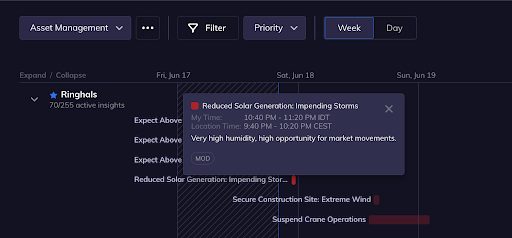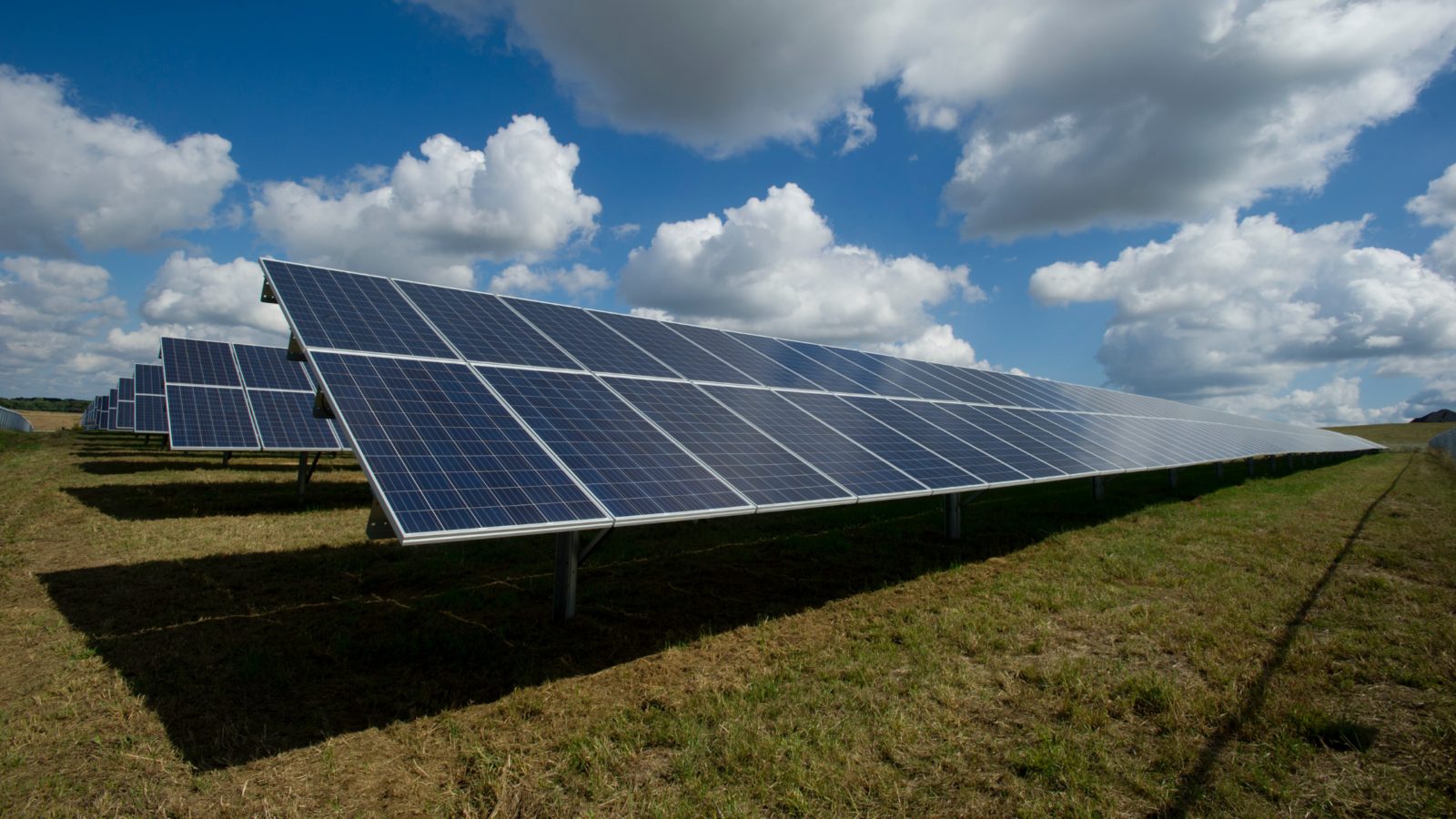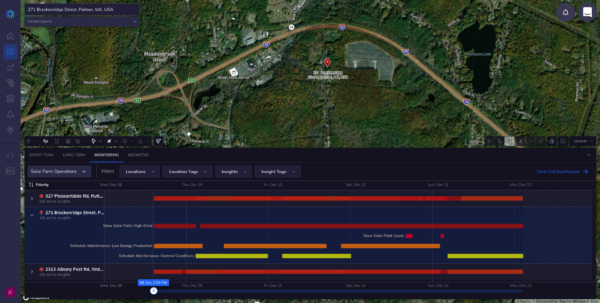Imagine you own a solar farm. As you harness the sun’s power through photovoltaic (PV) panels or concentrate solar-thermal power (CSP), you’re likely already thinking about the weather. What weather considerations cross your mind every day?
The Cost of Changing Weather On Solar Operations
Everyday weather conditions have a significant impact on solar farms’ ability to operate effectively and efficiently.
- Clouds: Partly cloudy days can drop production by up to 25%.
- Humidity: Consistent humidity and heat degrade solar panels over time, while tiny water droplets can refract some sunlight away from the panels themselves, dropping energy efficiency.
- Heat: As temperatures rise above 77 degrees, panels become less efficient, dropping production levels.
- Snow: While light snowfall can slide right off most pitched panels, more significant snow accumulation can add stress to panels, damaging them and dropping production levels.
- Lightning: Thunderstorms drop production, and lightning strikes can damage panels or fry electrical systems altogether.
- Hail: Sudden hailstorms can cause damage to sensitive panels.
- Flooding: When flooding occurs, a system may need to be disconnected from the grid.
And that’s just the daily weather. Climate change is causing more extreme weather patterns, leading to hotter days, increased snowfall, more intense lightning storms, and larger hail. As a result, insurance premiums for renewable energy operators have risen by over 400% since 2019.
Let’s look at a specific large-scale example:
As one of the sunniest states in the country, Texas is home to over 11GWs of installed solar capacity as of Q2 2021. It also experiences some of the nation’s most severe hailstorms, with the infamous “Hail Alley” stretching from southwestern Texas up to South Dakota. Hailstorms are often considered to be winter weather, but in a place like Texas, that’s not the case. Hail season peaks between March and May each year.
In 2019, one major storm wiped out the 178 MW Midway Solar Project, destroying roughly 60 percent of the site’s solar modules and totaling more than $70 million in insurance damages. And hailstorms are only getting worse. In fact, the largest hailstone ever recorded in Texas occurred in an April 2021 storm in the city of Hondo, measuring 6.4 inches in diameter and weighing 1.26 pounds.
Michael Cosgrave, a risk manager with insurance firm Renewable Guard, experienced this firsthand:
“We saw an $80 million hail loss in Texas in 2019, damaging 13,000 solar panels at a 160 MW solar farm, which really had a lot of underwriters and carriers taking notice. Historically, you would have seen a minimum $100,000 deductible or 5% of the physical damage limit. Over a few years, that grew to $250,000 and 5%, and I’ve seen $1,000,000 and 15% in Texas, which as far as I know is unprecedented.”
Adapting Your Solar Operations to Changing Weather Extremes
Effective solar power generation depends on the weather. But mitigating risk can be challenging with rising deductibles, gaps in microcrack testing, and event-specific premiums. That’s why understanding historical, real-time, and predictive weather patterns is so essential to optimizing daily solar farm operations.

Predicting Energy Generation
Japan’s solar market, for example, has more than 60 GW, but 90 percent of sites across the country provide less than 2 MW, meaning they’re individual homes or small operations. Such distribution makes it challenging for companies to predict solar energy load vs. demand, resulting in wasted energy and money.
SB Energy, Japan’s leading renewable energy firm, uses Tomorrow.io to manage these supply and demand challenges through predictive analytics and operational forecasting. By evaluating historical weather forecasts with our Comprehensive Bespoke Atmospheric Model (CBAM) and training their AI model to predict future solar power generation, SB Energy can better plan day-to-day tasks like staffing, handling weather protocols, and managing panel efficiency.
The team can accurately predict their own potential energy generation along with their competitors’ by understanding the historical forecast and then using the same forecast model. From there, SB Energy optimizes aggregated load across their grid network, taking the guesswork out of solar forecasting and load balancing.
Improving Algorithms with Weather Data
Weather intelligence isn’t just useful for individual solar operators. A reliable Weather API is also a necessity for solar tracking companies, solutions that adjust the direction of panels based on the direction of the sun.
These organizations typically rely on a combination of weather data sources, including ground-based methods (e.g. anemometers), to make recommendations on panel tilt. But these data sources aren’t able to provide a comprehensive historical, real-time, and forecasted view of all types of weather extreme weather.
Protecting Your Solar Farm with Tomorrow.io
Securing your assets and keeping your crews safe starts with knowing when hailstorms are on the way. Tomorrow.io’s advanced alerts give your team the time they need to start stowing panels before storms arrive.
With actionable data on hand, you can better optimize your operations to take advantage of favorable conditions and mitigate dangerous weather risks. While you can’t stop major storms from forming, you can make sure your solar farm is better prepared with Tomorrow.io.
See How Tomorrow.io Can Help
















